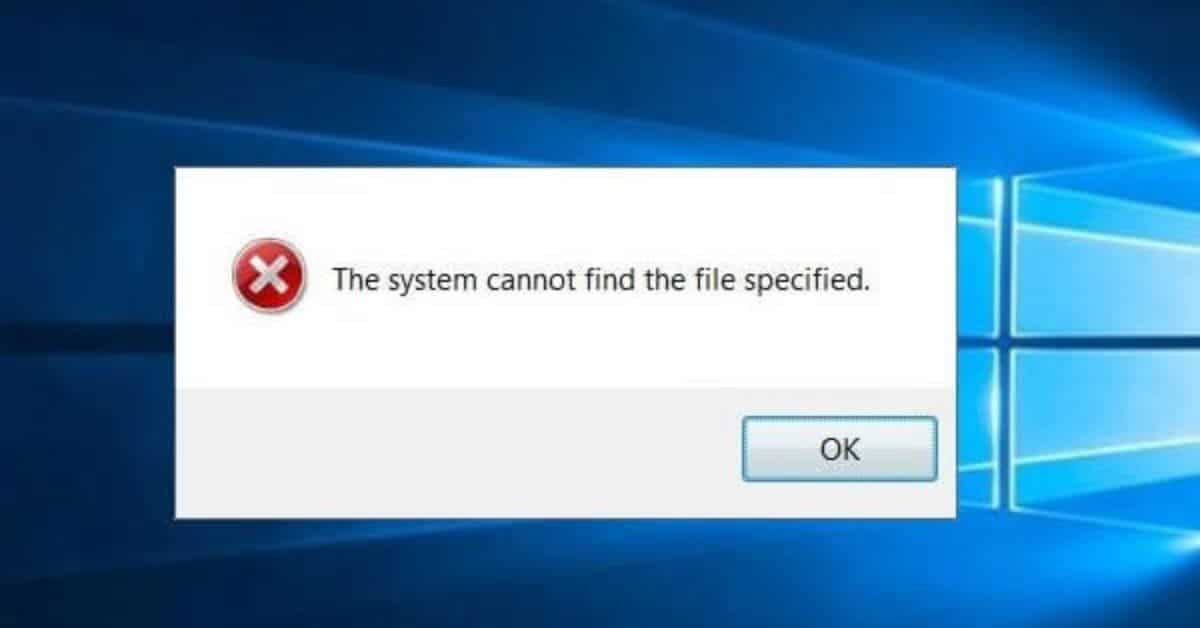Dealing with confusing error messages can be frustrating! We’ve all seen those long, technical sounding codes pop up when a program crashes. One common error on Apple devices is the “errordomain=nscocoaerrordomain&errormessage=could not find the specified shortcut.&errorcode=4” message.
At first glance, this error code looks complicated and intimidating. But by breaking it down step-by-step, you can actually understand what went wrong and how to fix it. The first part indicates the error is related to Apple’s operating systems for Mac and iPhone/iPad. The second portion means the software can’t find a specific file or shortcut it expects to be there.
The good news is this error is usually not too difficult to resolve. In this short guide, we’ll walk through the likely causes and show you some simple troubleshooting techniques. With the right tips, you can get your Apple device back on track and avoid future headaches from this pesky error message. By the end, you’ll be able to tackle those cryptic codes like a pro!
Understanding the Error Domain
When an error message pops up, it can sometimes feel like you need a decoder ring to understand it! But the first part of the message actually provides a helpful clue. The “errordomain=nscocoaerrordomain” section indicates what general area the problem is coming from.
In this case, “NSCocoaErrorDomain” refers to the Cocoa framework used by Apple for iOS and MacOS applications. So right away we know the issue is related to an app, not some deeper system problem. This domain acts like a categorized list of potential errors that can happen in those apps. It’s Apple’s way of organizing issues into related groups.
The Error Message: A Closer Look
Now that we know the general domain, let’s zoom in on the actual error message itself: “could not find the specified shortcut.” This tells us what went wrong – the app can’t locate something it expects to be there.
This specific issue usually pops up when a file, folder, or shortcut the application relies on has gone missing. It could be the file was moved somewhere else, accidentally deleted, or the shortcut path changed. Whatever the case, the app launches expecting that file or shortcut to be in a certain spot, but doesn’t find it there. Now we understand it’s not just a generic app error, but specifically a problem finding a particular resource the app needs.
Error Code 4: What does it Mean?

When we see that super long error message, like “errordomain=nscocoaerrordomain&errormessage=could not find the specified shortcut.&errorcode=4”. In our case, the code is “4”. This specific code indicates there is a problem finding a file or folder.
It’s essentially a more technical way of saying the same thing as the text message – something is missing! Error 4 is pretty common and usually not too tricky to fix. Now we know for sure the issue deals with a file that the app can’t locate for some reason.
Troubleshooting the Error
Troubleshooting frustrating errors takes patience, but following a few logical steps can help identify the cause. First, update your operating system, apps, and software to eliminate any known bugs. Developers push regular fixes for common issues that can lead to errors. Next, carefully review the app’s settings and file pathway configuration.
Check for accuracy and look for any changes that occurred before the error appeared. Tracing the app’s processes step-by-step narrows down where the breakdown happened. Trying basic troubleshooting paves the way for a smooth fix.
Read this Post: Hoptraveler.com: Your Ultimate Companion for Personalized Travel Planning 2024
Common Causes of the Error
Several typical culprits lead to the app shortcut missing error. Software upgrades sometimes alter folder locations, breaking shortcuts that apps rely on. Conflicts between applications trying to access the same file can also cause issues. Accidental deletion or relocation of vital files is another common occurrence.
Users organizing their system may inadvertently move an important app resource. Shortcut paths mysteriously corrupting or hard drive failures can also make critical files inaccessible. Understanding the range of usual suspects allows users to pinpoint the cause more easily.
Resolving the Error: Step-by-Step Guide

Conquering this error “errordomain=nscocoaerrordomain&errormessage=could not find the specified shortcut.&errorcode=4” involves methodically working through solutions.
- Begin by installing any available app and operating system updates, which often address file location bugs.
- Search for missing or corrupted files the app requires.
- If files are present, verify the app shortcut still points to the correct path location.
- Reset application preferences to ensure proper file saving protocols.
- As a last resort, uninstall and reinstall the app to refresh all configurations.
Following these steps sequentially helps surface then target the specific issue, getting software running smoothly again.
Preventing Future Errors
An ounce of prevention is truly worth a pound of cure when managing software errors. Develop a routine of regularly checking and installing operating system and software updates, which delivers important bug fixes. Be extremely cautious before moving or deleting files to avoid disrupting app dependencies.
Use organizational techniques like favoriting or tagging critical files. Enable auto-save and create redundancies like file backups or copies. And take time to understand how your apps function to make tweaking settings less risky. Adopting preventative strategies helps you steer clear of common errors.
Expert Insights
Industry experts recommend developing deeper knowledge of your system’s architecture and app features to enable resolving issues independently. While automatic fixes provide temporary relief, learning how to manually adjust configurations builds more robust problem-solving skills.
Tech professionals advise studying operating system basics, researching error codes, and reading troubleshooting guides to bolster competency. Building technical know-how takes time but allows users to understand errors and implement solutions tailored to their specific setup.
Case Studies
Consider a photographer who suddenly can’t access an important photo library from their editing app due to this “errordomain=nscocoaerrordomain&errormessage=could not find the specified shortcut.&errorcode=4”. They discover a recent operating system update changed the default folder structure, breaking the app’s saved shortcut.
By taking time to understand the context around the error, they could successfully repair the shortcut and restore functionality. This underscores the importance of careful troubleshooting over quick fixes when resolving app issues.
User Experiences
Tech community forums contain extensive discussions around this particular error. Users share stories of frustration when important workflows get disrupted by a crashed app. Some have luck rapidly reinstalling the affected app or rebooting their device.
Others invest time isolating the issue and report detailed steps for repairing corrupted files or permissions to fix stubborn errors. Reading about fellow users’ debugging journeys can provide helpful perspective when tackling your own tricky errors.
Advanced Solutions
For advanced troubleshooters, several sophisticated methods exist to modify system files and overcome complex errors. Terminal commands can reset permissions or edit configurations for corrupted apps. Utilities like Apple’s Disk Utility application enable diagnosing and repairing damaged files that may cause errors.
Caution should be exercised, as incorrect terminal inputs or repairs using system tools can severely damage operating system stability. Expert technical guidance is recommended when attempting advanced solutions to avoid making the issue worse.
When to Seek Professional Help
If basic troubleshooting techniques and advanced system tools fail to resolve the error, seeking assistance may be the best course. Technical support specialists and repair services have advanced training for diagnosing obscure system-level issues leading to errors.
They can methodically isolate the fault and provide instructions or repairs tailored to your unique configuration. While professional help comes with added costs, it can efficiently resolve problems complex enough to stump even seasoned troubleshooters.
Conclusion
At first glance cryptic “errordomain=nscocoaerrordomain&errormessage=could not find the specified shortcut.&errorcode=4” can seem intimidating. But a bit of focused decoding sheds light on the nature of the problem and charts a path to resolution. Methodically verifying file locations, app settings, and system configurations allows users to get to the root of most errors.
Learning preventative habits further equips people to avoid common issues. With knowledge and persistence, convoluted error codes don’t need to ruin your day.
Faq’s
What causes the “could not find specified shortcut” error?
This error typically occurs when an app cannot locate a file, folder, or shortcut it expects to find due to it being deleted, moved, or having an incorrect file path set.
Is the “NSCocoaErrorDomain” always related to macOS or iOS apps?
Yes, the NSCocoaErrorDomain indicates the error originates from an Apple operating system application, so it relates to Mac or iOS apps.
How can I prevent getting the “could not find specified shortcut” error again?
Updating your apps regularly, organizing files carefully, backing up data, and avoiding unnecessary file path changes can help prevent this error in the future.

As a seasoned contributor to “EnglishLush”, Rosalie combines her linguistic prowess with a keen understanding of various topics, ensuring a delightful and informative reading experience. Her articles effortlessly blend clarity, creativity, and a touch of elegance, making language exploration an exciting journey for readers.










